In 2013, Travis Scott was just another Houston rapper trying to break into the game with dark, genre-blurring mixtapes and a Kanye co-sign. A decade later, he’s not just a chart-topping artist — he’s become the gold standard for celebrity brand deals, reshaping what it means to market hip-hop in the 21st century.
It’s not every day a rapper becomes a fast-food phenomenon and a luxury fashion designer. But Scott did both — selling out a McDonald’s meal in minutes and designing an entire Dior collection in the span of a few years. His moves aren’t random endorsements; they’re cultural blueprints. He’s built a marketing universe where limited sneaker drops, virtual concerts, and Cactus Jack-branded everything orbit a central force: the persona of Travis Scott.
This article unpacks how Scott didn’t just ride the wave of celebrity branding — he reengineered it. From corporate boardrooms to fashion week runways, Travis Scott has become the face of a new marketing era — where hip-hop isn’t just part of the culture, it is the culture.
Beyond the Billboard — Why Brands Fell in Love with Travis Scott
The Cactus Jack Effect: Authenticity Meets Marketability
Travis Scott isn’t just a celebrity with a brand — he is the brand. Under the Cactus Jack umbrella, he’s crafted a creative universe that feels less like an extension of his music and more like a fully formed lifestyle. From dark, surreal visuals to dystopian stage design and cryptic merch drops, every aesthetic decision aligns with the mood he’s built across albums, videos, and partnerships.
This cohesion is why brands don’t just want his endorsement — they want his worldbuilding. Scott brings cultural credibility that feels earned, not outsourced. Unlike many celebrity deals that feel like bolt-ons, his brand synergy is seamless. Whether it’s a Nike sneaker or a Reese’s Puffs cereal box, the product becomes part of a bigger story — gritty, cool, youth-driven, and emotionally charged.
More than popularity, it’s his ability to create emotional texture and visual consistency that sets him apart. For Gen Z and Millennial consumers fluent in irony and hype culture, Scott’s universe feels not only authentic but alive. That’s what brands are buying into.
Gen Z’s Messiah of Cool
Travis Scott didn’t just capture Gen Z’s attention — he built an ecosystem tailored to their digital-native instincts. He doesn’t speak to his audience from above; he meets them in the places they live online. From launching his Astronomical Fortnite concert — a virtual spectacle that pulled over 12 million viewers — to teasing merch and drops through cryptic Instagram posts, Scott understands that fan engagement isn’t about constant visibility, but strategic mystique.
His appeal isn’t just musical — it’s architectural. Every move feels part of a broader world Gen Z wants to enter, not just observe. Limited drops with Nike and exclusive McDonald’s merch created scarcity that fueled resale markets and turned consumers into curators. His streetwear collaborations blur the line between fashion and fandom.
What makes him stick is that he never over-explains. In an era of performative branding, Scott’s silence — the lack of traditional PR polish — becomes part of his cultural capital. For Gen Z, who value authenticity filtered through hype, that’s more powerful than any billboard.
Deal by Deal — Dissecting Travis Scott’s Brand Portfolio
McDonald’s — Fast Food, Fast Culture
When McDonald’s launched the Travis Scott Meal in 2020, it wasn’t just another celebrity endorsement — it was a masterclass in cultural marketing strategy. The collaboration marked the fast-food giant’s first celebrity meal since Michael Jordan’s in 1992, but this time the approach was radically different: the campaign didn’t sell burgers — it sold belonging.
Travis didn’t just lend his name to a combo meal. He infused the campaign with his creative DNA — from staff uniforms inspired by Cactus Jack’s aesthetic to an exclusive line of limited-edition merch that sold out within hours. Social media lit up with fans ordering “The Travis Scott” by name, sparking viral memes and TikTok trends that made the campaign feel organic, not manufactured.
What made it resonate wasn’t just the meal — a basic Quarter Pounder combo — but how seamlessly it integrated into Scott’s universe. It felt like an extension of his brand, not a corporate play. The results were staggering: a noticeable McDonald’s sales bump in Q3, widespread cultural buzz, and a new template for celebrity marketing that felt immersive rather than transactional.
In short, Travis didn’t endorse McDonald’s. He colonized it — and fans lined up to join the world he built.
Nike and Jordan — Sneakerhead Domination
When the first Travis Scott x Air Jordan 1 dropped in 2019, it wasn’t just a sneaker release — it was an event. The reverse Swoosh design, earthy tones, and hidden stash pocket instantly set the silhouette apart, but it was the storytelling around it that sparked the frenzy. This wasn’t just a collaboration — it was a portal into Travis’s world: rugged, rebellious, and exclusive.
The hype was immediate. Pairs sold out in seconds. Resale values skyrocketed overnight, some fetching over $1,500 — a testament to both Scott’s influence and the power of limited-supply drop culture. But it wasn’t just about scarcity. Each release — from the Air Jordan 4 “Cactus Jack” to the Air Max 1 pack — carried a cohesive aesthetic, making Travis Scott Jordans feel like chapters in an ongoing narrative, not just colorways.
He blurred the line between streetwear and performance sneakers, shifting what “celebrity collabs” could mean. Instead of slapping a name on a product, Scott shaped the story and feel of each release — and fans responded like collectors, not just customers.
His impact reshaped hype marketing, and in many ways, inspired a new wave of artists seeking similar sneaker legitimacy — but few have matched his cultural weight.
Dior — From Stage to Runway
In 2021, Travis Scott made fashion history — not by walking the runway, but by shaping it. His collaboration with Dior for the Spring/Summer 2022 menswear collection wasn’t just another celebrity capsule. It marked the first time the iconic fashion house co-designed a full line with a musician. For a brand rooted in Parisian elegance to hand over creative reins to a Houston-born rapper signalled a seismic shift: luxury fashion meets hip-hop wasn’t a trend — it was the new standard.
Scott worked directly with Dior’s artistic director, Kim Jones, infusing the line with Cactus Jack’s desert psychedelia, Texas-rooted motifs, and tour-inspired silhouettes. From distressed pastel suiting to flame-emblazoned outerwear, the Travis Scott Dior collection brought streetwear aesthetics into couture spaces without compromise. It wasn’t just a mash-up — it was a new hybrid language of style.
This high-fashion crossover redefined what artistic direction looks like in a brand partnership. Scott wasn’t the face of the campaign — he was part of its DNA. For the fashion world, it was a signal that hip-hop wasn’t just influencing style — it was haute couture. And for Travis Scott, it solidified his place not just as a style icon but as a designer in his own right.
Not Just a Face — Creative Control and Strategic Storytelling
Branding with a Vision, Not Just a Logo
Travis Scott doesn’t do plug-and-play endorsements — he builds experiences. In nearly every major collaboration, from McDonald’s to Dior, his fingerprints are all over the creative process. When McDonald’s rolled out the Travis Scott Meal, it wasn’t just about food — it came with staff uniforms redesigned in Cactus Jack style, retro packaging, and a campaign aesthetic that echoed his album visuals. It felt less like fast food, more like a pop-up inside his universe.
This approach reflects Scott’s role not as a spokesperson, but as a co-creator — someone who brings visual storytelling, emotional tone, and cultural fluency to the table. With Nike, he’s involved in everything from silhouette selection to photo shoot art direction. With Dior, he helped set the full runway concept.
He isn’t slapping a logo on the box — he’s shaping the box itself. That level of hands-on creative control is rare, and it’s why his brand deals feel immersive, not manufactured.
Narrative Cohesion Across Platforms
Travis Scott’s branding doesn’t live in silos — it unfolds like an ongoing saga across every channel he touches. Whether it’s a cryptic Instagram teaser, a surprise merch drop, or a Fortnite concert-turned-fan-experience, each piece feeds into a larger, interconnected narrative. His music videos echo the design language of his sneaker releases. His tour visuals align with the mood of his Cactus Jack packaging. Even limited-edition cereal boxes and fashion campaigns feel like extensions of the same universe.
This cross-platform storytelling isn’t accidental — it’s a deliberate form of immersive branding that pulls fans deeper with each touchpoint. Instead of treating partnerships as isolated moments, Scott fuses them into a narrative arc that feels cohesive and alive. The result? An integrated campaign model that turns brand deals into world-building exercises — where the story is the product, and the product is just another way in.
The Business Metrics Behind the Hype
Behind the viral moments and sold-out merch lies the hard truth of any brand deal: Did it work? In Travis Scott’s case, the answer is a resounding yes — and the numbers prove it.
Let’s start with McDonald’s. The Travis Scott Meal launched in September 2020 and drove a tangible sales spike during a quarter otherwise hampered by the pandemic. According to Business Insider, McDonald’s U.S. sales rose 4.6% in Q3 — a bump directly tied to the campaign’s cultural relevance. Merchandise tied to the meal generated an estimated $20 million in revenue on its own, with some reselling for double or triple their retail price.
On the sneaker front, StockX data shows that Travis Scott Jordans consistently rank among the top-performing shoes by resale value, with many pairs appreciating 500–1000% above retail. His Nike collaborations aren’t just limited-edition hits — they’re sustained assets in the resale economy, proving both cultural stickiness and financial longevity.
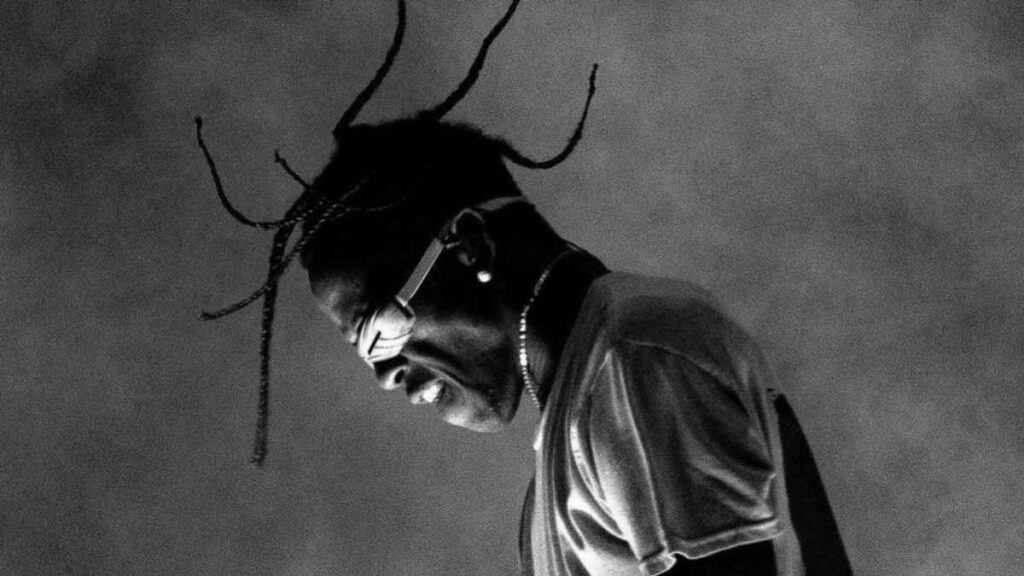
As for Dior, while luxury brands rarely release specific numbers, LVMH’s earnings showed notable growth in men’s fashion for the second half of 2021, with industry analysts pointing to the buzz around Scott’s artistic direction for Dior as a contributing factor.
This is celebrity marketing performance with serious brand ROI. It’s not just about visibility — it’s about engagement, conversion, and cachet. For companies betting on cultural relevance, Travis Scott delivered not just hype, but impact measured in millions.
How He Stacks Up — Travis Scott vs. Hip-Hop’s Brand Titans
The Jay-Z Blueprint 2.0?
Jay-Z laid the foundation for hip-hop entrepreneurship — turning Roc Nation into a business empire built on ownership, equity, and cultural leverage. But where Jay pursued boardroom influence, Travis Scott redefined the model for a new generation: less corporate, more experiential.
Instead of building a company from scratch, Scott inserts himself into global brands as a creative force — shaping aesthetics, not just balance sheets. It’s legacy vs. modern branding: Jay-Z bought into champagne and streaming platforms; Travis codesigned sneakers, meals, and runway shows.
He didn’t follow the mogul blueprint — he remixed it. In doing so, he expanded what hip-hop entrepreneurs could look like in the digital age.
Bigger Than Kanye? The Fashion vs. Lifestyle Debate
Kanye West built Yeezy like a fortress — a standalone fashion empire with full ownership and direct influence over design, distribution, and brand equity. Travis Scott, by contrast, operates more like a cultural mercenary: decentralized, agile, and embedded within existing brand ecosystems.
While Kanye’s fashion influence centers on reshaping silhouettes and trend cycles, Travis focuses on cultural imprint — tapping into hype, scarcity, and youth identity across platforms. He doesn’t own the brands — he injects his world into theirs.
Their celebrity business models diverge sharply: one is an empire builder, the other a brand symbiote. In the current landscape, Travis’s nimbleness may be the more scalable — and sustainable — play.
Drake, Rihanna, Tyler — Different Games, Same Arena
Rihanna’s Fenty is a powerhouse of ownership and inclusivity, redefining beauty standards. Drake’s OVO thrives as a sleek lifestyle brand with streetwear cachet. Tyler, the Creator built Golf le Fleur as a quirky, auteur-driven label grounded in aesthetic cohesion.
Travis Scott’s Cactus Jack, though, feels more like a cultural operating system — one that plugs into sneakers, meals, luxury fashion, and gaming with chameleon-like agility. Unlike Rihanna’s product empire or Tyler’s niche vision, Travis scales across verticals without diluting his identity.
Where others build celebrity lifestyle brands, Travis focuses on creative ownership inside collaborations — embedding his DNA into existing platforms while keeping full command of the vibe.
What I Learned from Covering Travis Scott
As I dug deeper into Travis Scott’s branding universe, what struck me wasn’t just the scale of his deals — it was the intentionality behind them. I expected to find clever marketing, maybe a few viral gimmicks. Instead, I found a blueprint for the future of culture-driven commerce.
Covering Travis isn’t just reporting on another artist endorsement — it’s tracking a shift in how influence is packaged and sold. At some point, I realized: Travis Scott isn’t partnering with brands — he’s reprogramming them. Dior didn’t just get clout from working with him; they got access to a fully-formed world, one where sound, visuals, and mood all align into something fans don’t just buy — they inhabit.
That was my moment of clarity: this isn’t about merch or meals. It’s about narrative ecosystems — where every product is a portal, every drop a chapter. He’s not leveraging his fame for cash grabs; he’s designing culture at scale.
And maybe that’s the real lesson — that authenticity, in the TikTok era, isn’t about transparency. It’s about coherence. The reason Gen Z shows up for Travis, again and again, is because everything he touches still feels like him.
In a marketing world full of noise, Travis Scott’s genius is knowing when to whisper — and when to drop the bass.
What’s Next for the Scott Empire?
If Travis Scott’s past collaborations taught us anything, it’s that he doesn’t just follow trends — he materializes them. So what’s next for the Cactus Jack empire? All signs point to deeper integration with digital-first, tech-driven experiences.
He’s already dipped into virtual reality marketing with his record-breaking Fortnite concert, which felt more like an immersive brand simulation than a musical performance. Given the rise of Web3 platforms, digital merch, and NFT-powered fan engagement tools, it’s not hard to imagine Scott experimenting with tokenized album releases, interactive product drops, or even his own metaverse-style space — a persistent world where music, fashion, and brand partners converge.
His ability to maintain creative ownership while adapting across industries makes him a prime candidate for launching his platform — not just playing in someone else’s. Think: a Cactus Jack app that combines exclusive content, gamified brand experiences, and real-world rewards.
Whatever comes next, it won’t be static. It’ll be immersive, unpredictable, and unmistakably Travis — not just a rapper in the room, but a worldbuilder in the driver’s seat.
Why Travis Isn’t Just the Blueprint — He’s the Whole Architecture
Travis Scott didn’t climb the ladder of celebrity branding — he dismantled it and built something entirely new. Where others saw endorsements, he saw world-building. Where most celebrities lend their likeness, Scott lends meaning. Every campaign, every drop, every partnership feels like an extension of his creative brain — cohesive, curated, and culturally fluent.
He’s not operating within the old rules of brand power — he’s writing new ones in real time. In the age of algorithmic noise and attention scarcity, his model isn’t about being everywhere. It’s about being unmistakable wherever he shows up.
Travis Scott is no longer just a rapper with brand deals. He’s a living case study in modern cultural architecture — a rare hybrid of artist, strategist, and brand auteur. And if the future of marketing is about experience over exposure, Travis didn’t just set the standard. He became it.
Mohit Wagh is the co-founder of The Graval with over 10 years of experience in SEO and content strategy. He specializes in crafting data-driven, authoritative content that blends cultural insight with digital growth.



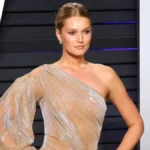




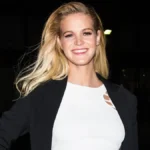
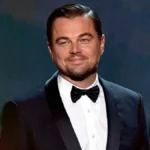

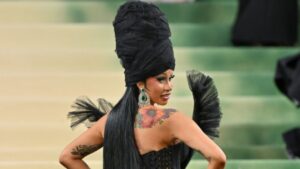
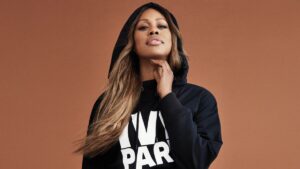
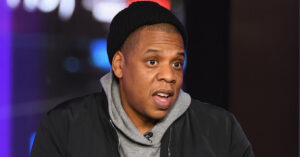

5 thoughts on “How Travis Scott Became the Blueprint for Hip-Hop Brand Deals — From McDonald’s to Dior”